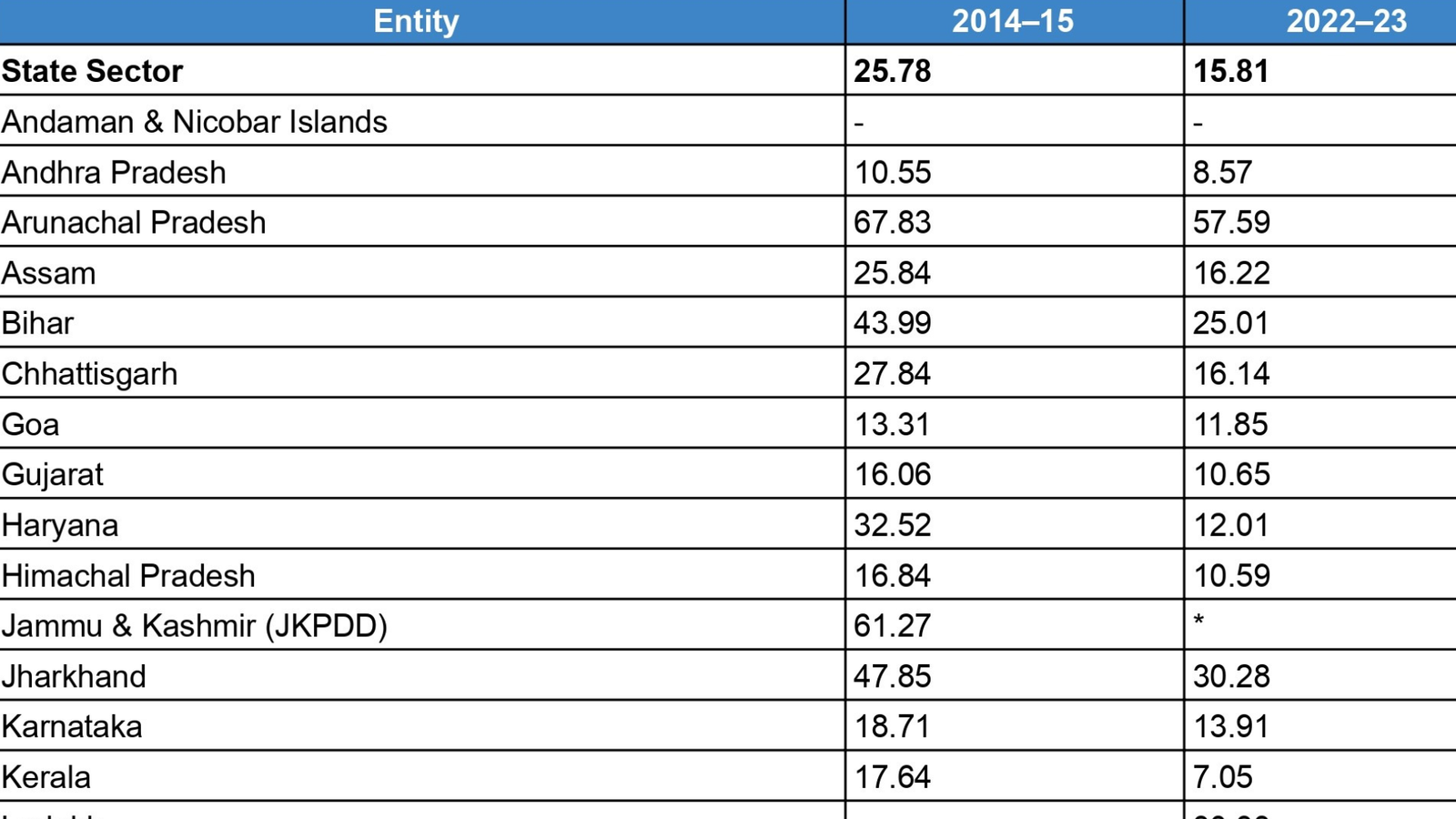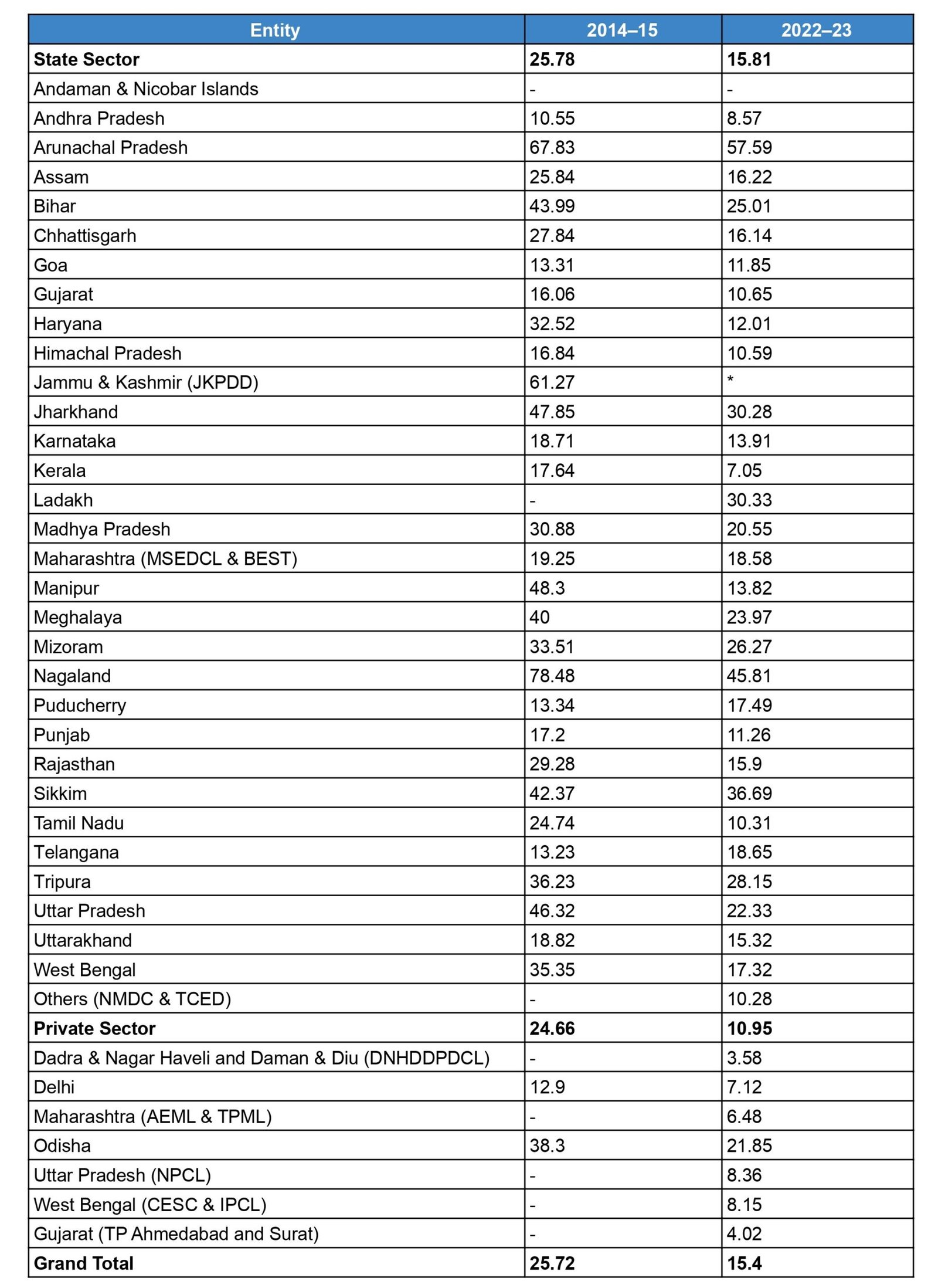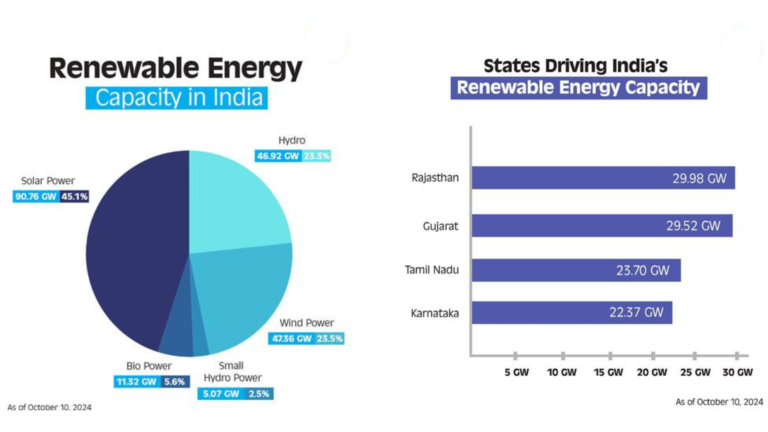AT&C loss (%) – 2014–15 vs 2022–23
Author: PPD Team Date: April 7, 2025

Author: PPD Team Date: April 7, 2025

This information has been given by the Union Minister for Power and New & Renewable Energy Shri R. K. Singh, in a written reply to a question, in Lok Sabha.
Author: PPD Team Date: December 22, 2024 Tata Power, one of India’s oldest and prominent energy companies, has evolved significantly in recent years. Below is an analysis of the company’s operational and financial performance along with recent developments. Operational and Segment Performance Tata Power has overall installed capacity of 14.2 GW as of FY24. Renewables account for 38% of this, equivalent to 5.4 GW. The company operates one of the largest solar EPC businesses,…
Advancement of Nuclear Energy Through a Materials Engineering Perspective Climate change and diminishing fossil fuels have fostered the development of cleaner and more sustainable energy sources since the past half a century. Advancements in nuclear energy have been gaining renewed attention as a source of stable and non-intermittent energy. Advanced nuclear reactors, heralded as the next generation of nuclear technology, promise to deliver safer, more efficient, and more sustainable energy. However, the success of these…

Author: PPD Team Date: October 15, 2024 India has crossed a major milestone in its renewable energy journey, with the nation’s total renewable energy capacity reaching 201.45 GW as of October 10, 2024, according to the Central Electricity Authority (CEA). When including the 8,180 MW of nuclear power, non-fossil fuel-based energy now accounts for nearly half of India’s total installed electricity generation capacity, which stands at 452.69 GW. Solar power leads India’s renewable energy contributions,…
Author: PPD Team Date: June 24, 2025 The global solar photovoltaic (PV) sector is evolving rapidly. The 2025 PV Module Index Report by the Renewable Energy Test Center (RETC) offers a detailed review of emerging trends, risks, and innovations in module design, performance, and reliability. Industry shifts and their implications The PV industry is navigating rapid changes. Supply chains are shifting due to tariffs and geopolitical constraints. Manufacturers are adopting new cell technologies like…
Author: PPD Team Date: May 20, 2025 In much of Southeast Asia, solar components are priced significantly lower than in the United States. A 600W Tier 1 solar panel from Canadian Solar or Jinko costs around $80. A 12kW inverter from Deye (marketed as Solar-Aark) is priced at $1,700. A 14.3kWh Dyness battery is available for $1,750. These are end-user prices from distributors, including warranty support. In contrast, solar system quotes in the US…
Author: PPD Team Date: August 7, 2025 In July, a group of American solar manufacturers requested that the U.S. Commerce Department impose tariffs on solar panels imported from India, Indonesia, and Laos. The petition accuses companies based in these countries of selling modules at unfairly low prices, which allegedly undercut recent U.S. manufacturing investments. The Commerce Department has begun reviewing the petition. This move came amid broader efforts by the small but growing domestic…
Author: PPD Team Date: December 22, 2024 Tata Power, one of India’s oldest and prominent energy companies, has evolved significantly in recent years. Below is an analysis of the company’s operational and financial performance along with recent developments. Operational and Segment Performance Tata Power has overall installed capacity of 14.2 GW as of FY24. Renewables account for 38% of this, equivalent to 5.4 GW. The company operates one of the largest solar EPC businesses,…
Advancement of Nuclear Energy Through a Materials Engineering Perspective Climate change and diminishing fossil fuels have fostered the development of cleaner and more sustainable energy sources since the past half a century. Advancements in nuclear energy have been gaining renewed attention as a source of stable and non-intermittent energy. Advanced nuclear reactors, heralded as the next generation of nuclear technology, promise to deliver safer, more efficient, and more sustainable energy. However, the success of these…

Author: PPD Team Date: October 15, 2024 India has crossed a major milestone in its renewable energy journey, with the nation’s total renewable energy capacity reaching 201.45 GW as of October 10, 2024, according to the Central Electricity Authority (CEA). When including the 8,180 MW of nuclear power, non-fossil fuel-based energy now accounts for nearly half of India’s total installed electricity generation capacity, which stands at 452.69 GW. Solar power leads India’s renewable energy contributions,…
Author: PPD Team Date: June 24, 2025 The global solar photovoltaic (PV) sector is evolving rapidly. The 2025 PV Module Index Report by the Renewable Energy Test Center (RETC) offers a detailed review of emerging trends, risks, and innovations in module design, performance, and reliability. Industry shifts and their implications The PV industry is navigating rapid changes. Supply chains are shifting due to tariffs and geopolitical constraints. Manufacturers are adopting new cell technologies like…
Author: PPD Team Date: May 20, 2025 In much of Southeast Asia, solar components are priced significantly lower than in the United States. A 600W Tier 1 solar panel from Canadian Solar or Jinko costs around $80. A 12kW inverter from Deye (marketed as Solar-Aark) is priced at $1,700. A 14.3kWh Dyness battery is available for $1,750. These are end-user prices from distributors, including warranty support. In contrast, solar system quotes in the US…
Author: PPD Team Date: August 7, 2025 In July, a group of American solar manufacturers requested that the U.S. Commerce Department impose tariffs on solar panels imported from India, Indonesia, and Laos. The petition accuses companies based in these countries of selling modules at unfairly low prices, which allegedly undercut recent U.S. manufacturing investments. The Commerce Department has begun reviewing the petition. This move came amid broader efforts by the small but growing domestic…
Author: PPD Team Date: December 22, 2024 Tata Power, one of India’s oldest and prominent energy companies, has evolved significantly in recent years. Below is an analysis of the company’s operational and financial performance along with recent developments. Operational and Segment Performance Tata Power has overall installed capacity of 14.2 GW as of FY24. Renewables account for 38% of this, equivalent to 5.4 GW. The company operates one of the largest solar EPC businesses,…
Advancement of Nuclear Energy Through a Materials Engineering Perspective Climate change and diminishing fossil fuels have fostered the development of cleaner and more sustainable energy sources since the past half a century. Advancements in nuclear energy have been gaining renewed attention as a source of stable and non-intermittent energy. Advanced nuclear reactors, heralded as the next generation of nuclear technology, promise to deliver safer, more efficient, and more sustainable energy. However, the success of these…